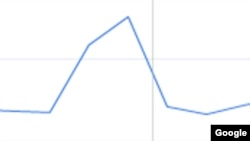Google introduced a new tool today, as part of its Transparency Report, which shows where and when access to Google sites is blocked. In April, Google launched its Government Requests tool, which maps the number of requests it receives from government agencies to remove content or "provide information about users of our services and products."
This from "The New York Times" "Bits" blog:
Google's hope is that by providing this transparency it will lead to less censorship around the world.
I only played around with it briefly, but it was interesting to see the spike in traffic in Iran for Google Maps during the postelection unrest last June (screen capture above). Was that the protesters using it for planning purposes or the authorities using it for cracking-heads purposes?
This from "The New York Times" "Bits" blog:
It publishes where and when Internet traffic to Google sites is blocked, and the blockages are annotated with details when possible. For instance, the tool shows that YouTube has been blocked in Iran since the disputed presidential election in June 2009.
The Transparency Report will also be the home for Google’s government requests tool, a map that shows every time a government has asked Google to take down or hand over information, and what percentage of the time Google has complied. Google introduced it in April and updates it every six months. Government requests could be court orders to remove hateful content or a subpoena to pass along information about a Google user.
The Transparency Report will also be the home for Google’s government requests tool, a map that shows every time a government has asked Google to take down or hand over information, and what percentage of the time Google has complied. Google introduced it in April and updates it every six months. Government requests could be court orders to remove hateful content or a subpoena to pass along information about a Google user.
Google's hope is that by providing this transparency it will lead to less censorship around the world.
I only played around with it briefly, but it was interesting to see the spike in traffic in Iran for Google Maps during the postelection unrest last June (screen capture above). Was that the protesters using it for planning purposes or the authorities using it for cracking-heads purposes?




